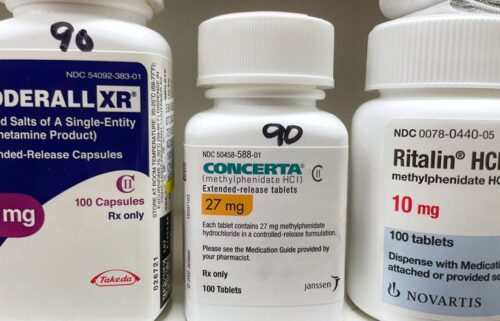How to prepare for and recover from hurricanes
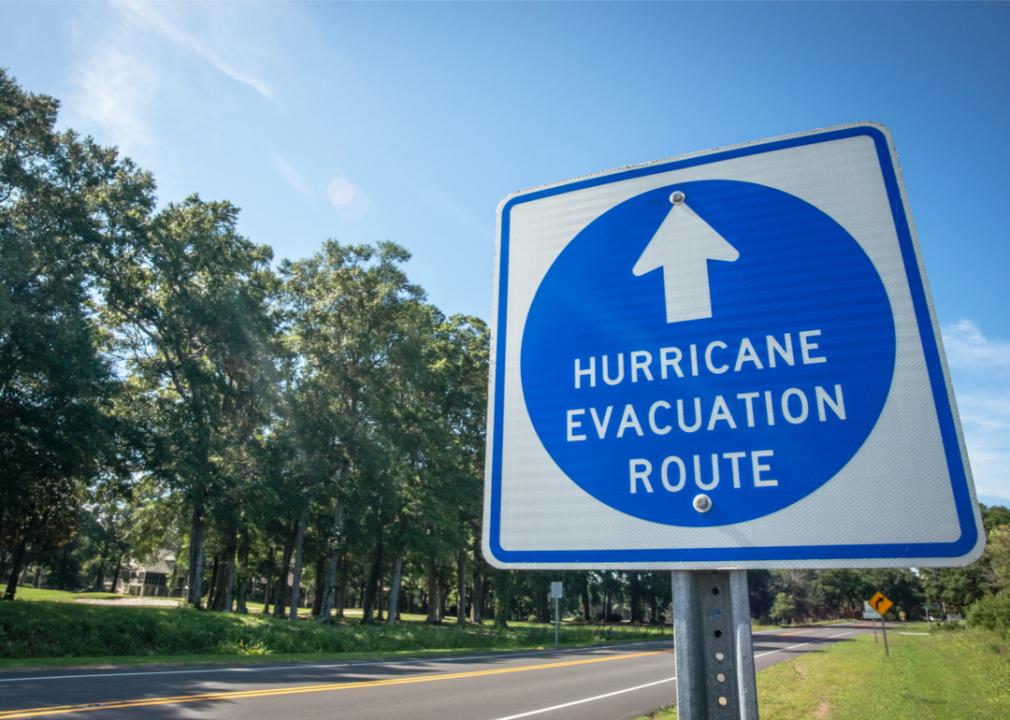
Darwin Brandis // Shutterstock
How to prepare for and recover from hurricanes
June 1 marks the beginning of the Atlantic hurricane season. Researchers predict activity during the 2023 season, ending on Nov. 30, will be slightly below average due to El Nino, which weakens storms forming in the Atlantic basin. Over the next six months, experts expect to see 11-15 named storms, 6-8 hurricanes, and 2-3 major hurricanes—those reaching category 3 or higher on the Saffir-Simpson Hurricane Wind Scale.
Even during a weaker-than-average season, hurricanes are both deadly and costly. According to the National Oceanic and Atmosphere Administration, hurricanes have caused over $1.1 trillion total in damages—averaging $20.5 billion per event—between 1980 and 2021. Hurricanes are also responsible for the highest number of deaths of any natural disaster, killing 6,697 people in that same time period.
It’s easy to feel powerless while facing natural disasters. While evacuating early is the only way to avoid these dangerous storms completely, for many people, this isn’t always possible. If you either must or choose to weather the storm, there are life-saving measures you can take to protect your home and family. Stacker consulted official recommendations from the Federal Emergency Management Agency, Department of Homeland Security, Red Cross, and other experts to compile this comprehensive list of steps you can take to prepare for and recover from a hurricane.
From emergency supply kits to reporting losses, keep reading for 30 ways to prepare for and recover from hurricanes
![]()

Kristi Blokhin // Shutterstock
#1. Make an emergency plan
Photo shows a coastal house with palm trees blowing in strong wind
No matter where you live, you should have an emergency plan for natural disasters. Sit down with your family and friends to discuss how you will find shelter, where you will go during an evacuation, and how you will communicate in case of an emergency.
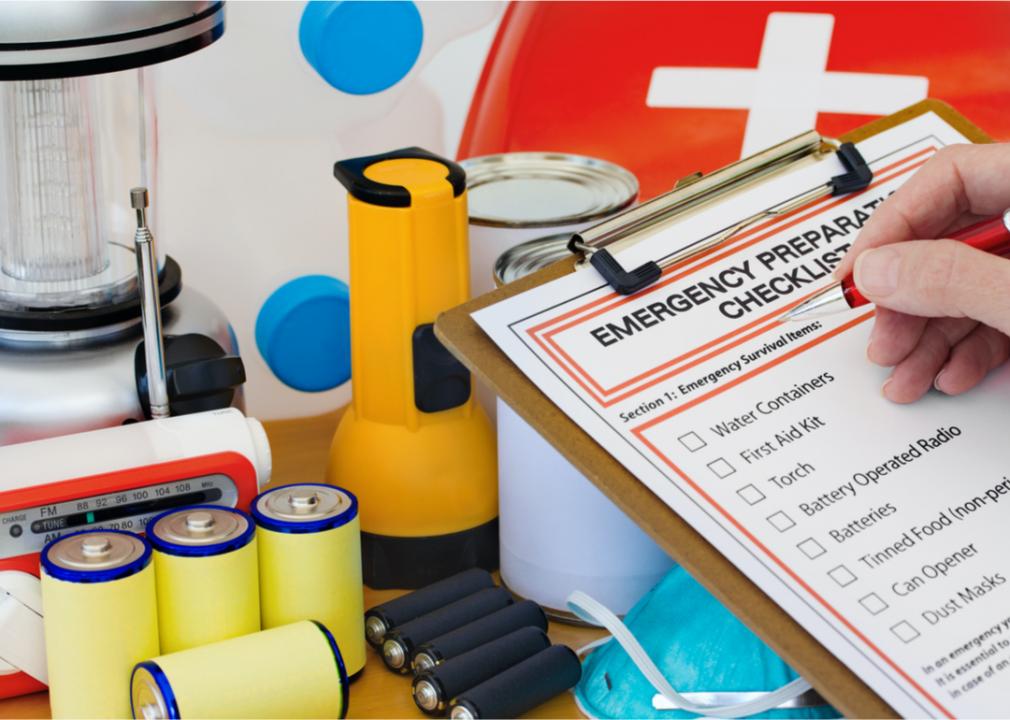
Pixsooz // Shutterstock
#2. Put together an emergency kit
Image shows a close-up of a hand checking items off an emergency checklist
Every household should also have a stocked emergency supply kit, including a “go bag” for each person. That way, if you need to shelter in place or leave home in a hurry, you’ll have everything you need to stay safe and healthy in one place.
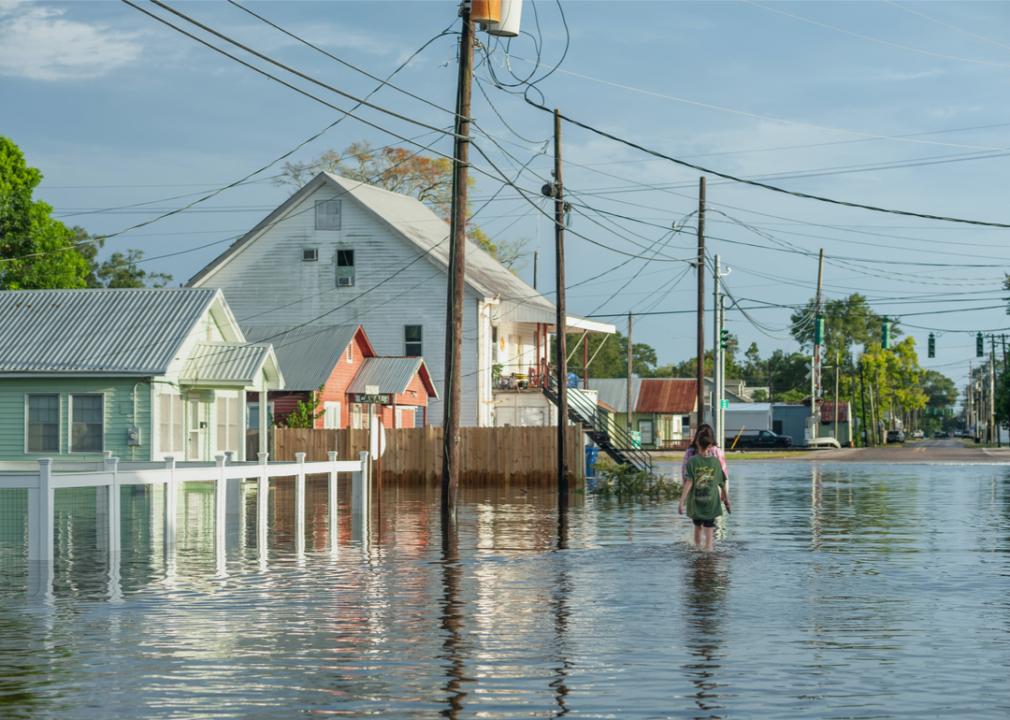
ccpixx photography // Shutterstock
#3. Assess risk factors in your area
Photo shows a flooded neighborhood with water rising into the first floor of many homes and at knee-level for passers-by
Some states like Florida get hit by hurricanes every year, while others very rarely experience this type of storm. Do some research on your county to find out how often your area experiences tropical storms, then check FEMA’s flood map to determine your risk of flooding.
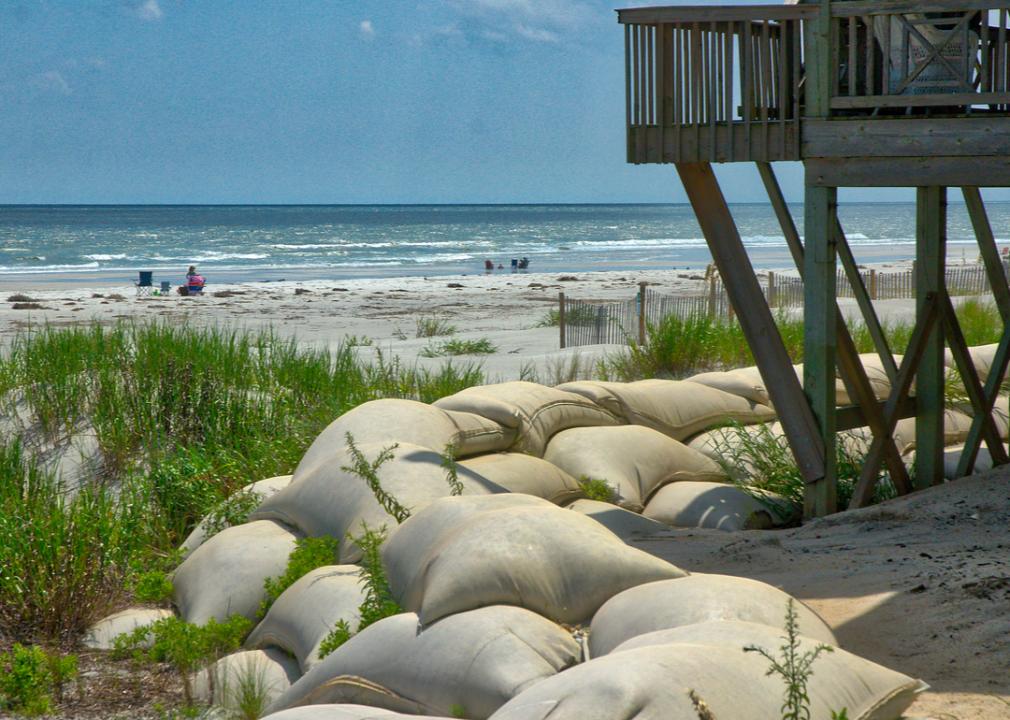
PatGallery // Shutterstock
#4. Stockpile useful supplies
Photo shows a wall of sand bags protecting a coastal home
Before a hurricane makes landfall, home improvement stores will be swamped by homeowners trying to purchase sandbags, plastic sheeting, and other supplies to keep floodwater out of their homes. Store these supplies in a safe place ahead of time so you don’t have to join the mad dash.
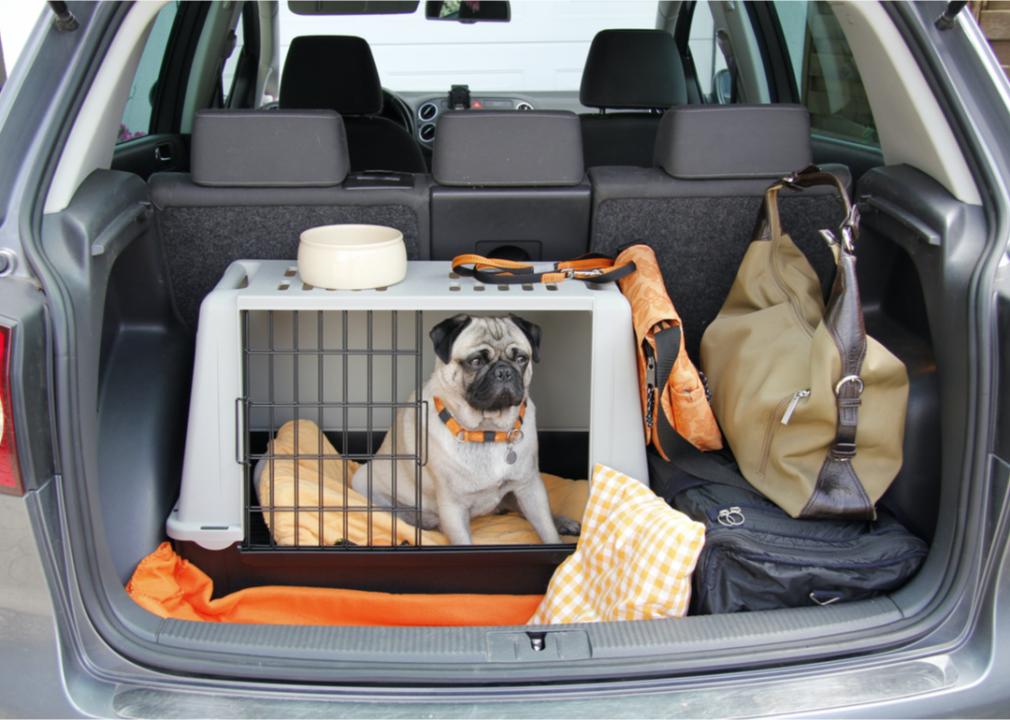
absolutimages // Shutterstock
#5. Plan for your pets
Photo shows a pug in a dog crate in the back of a car
Don’t overlook the nonhuman members of your family! If you have to evacuate, your pets will need to evacuate, too. Make sure they’re all microchipped and have identification tags—and make sure you have a plan for how to evacuate them.
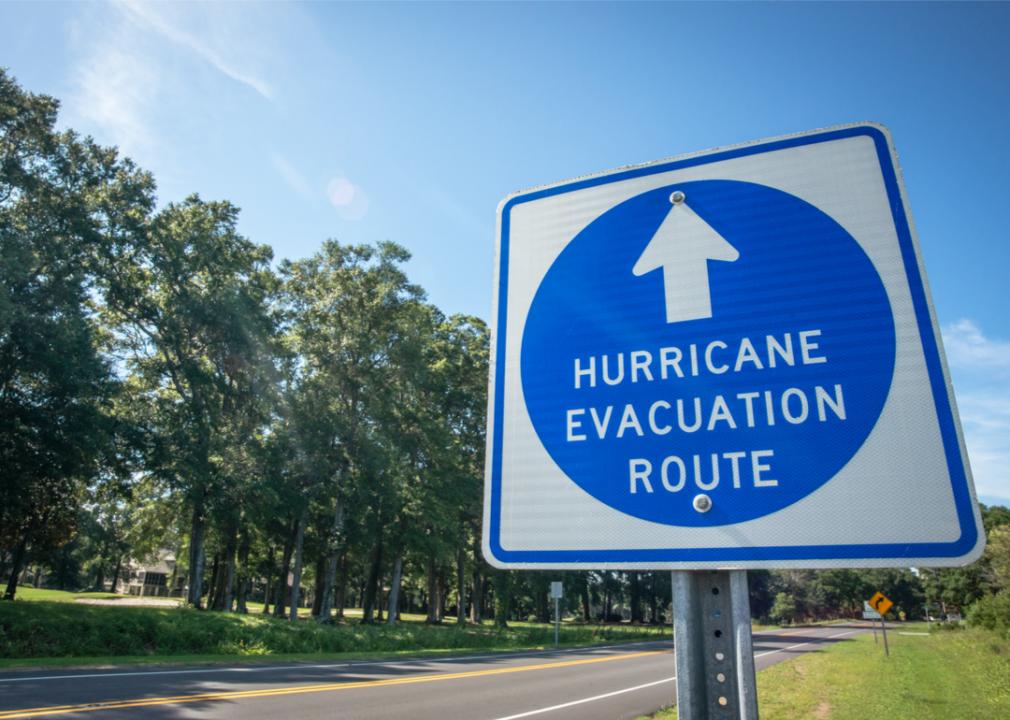
Darwin Brandis // Shutterstock
#6. Know your evacuation route
Photo shows a medium-shot of a “Hurricane Evacuation Route” sign
As soon as you hear that severe weather might be possible, start thinking about where you will go. Can you stay with friends or family? Do you need to make reservations at a hotel? Consider your route out of town, as well.
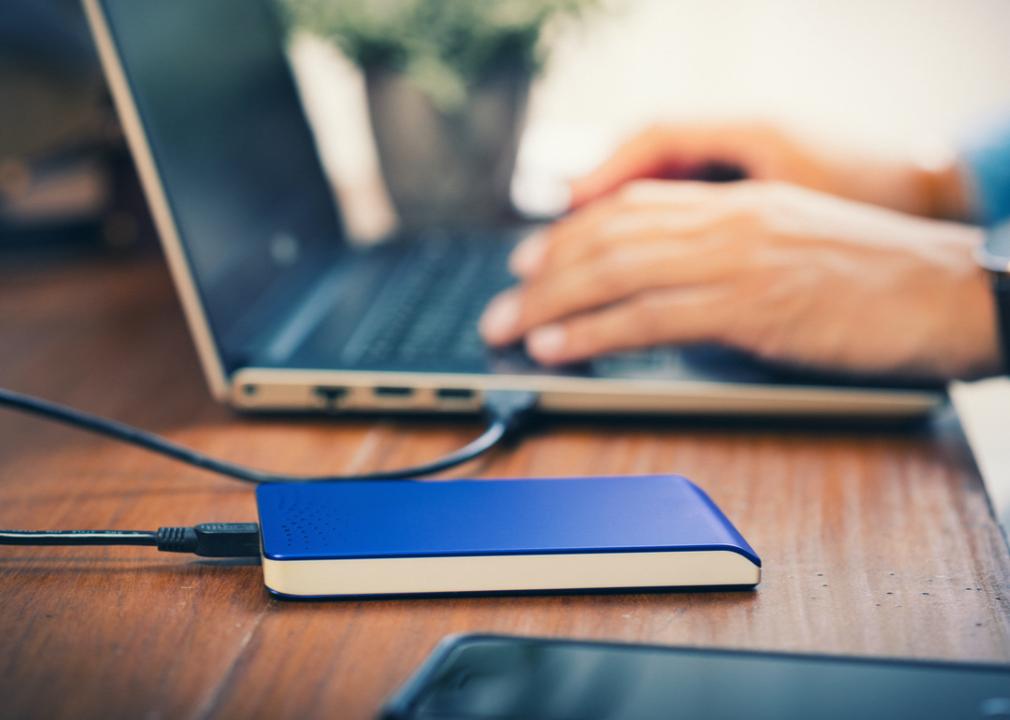
Nor Gal // Shutterstock
#7. Back up your electronics
Photo shows a closeup of a person’s hands typing on a laptop
Hurricanes can fill your home with floodwater, causing damage to computers, phones, and other electronic devices. Save important documents by uploading them to an online backup service or external hard drive that you take with you.
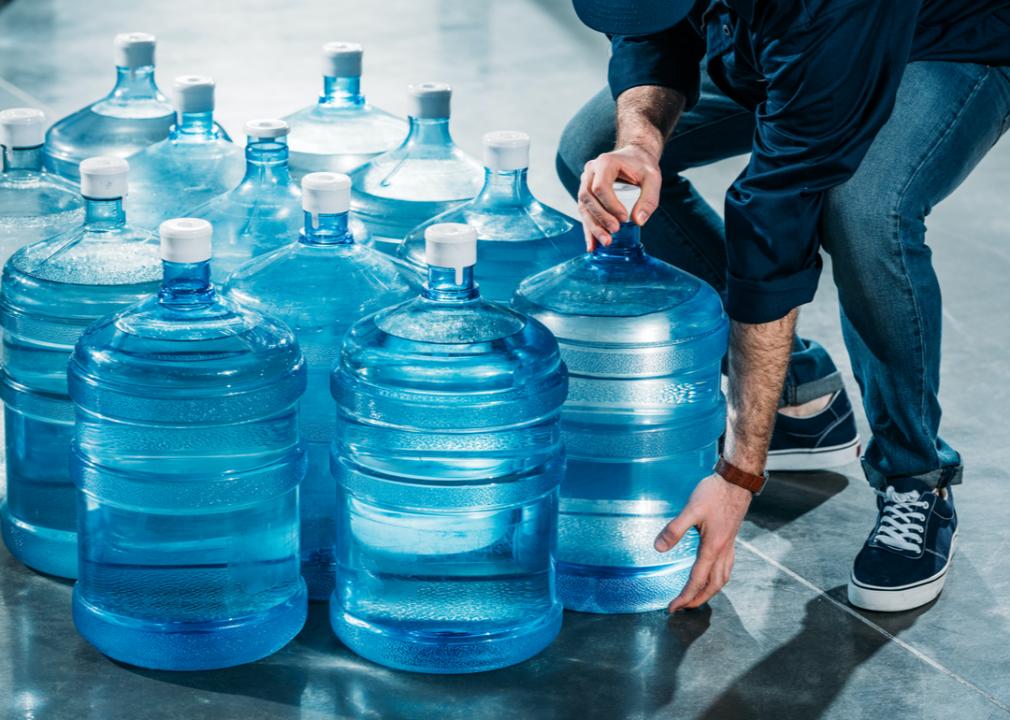
LightField Studios // Shutterstock
#8. Fill bottles with clean drinking water
Photo shows a dozen water jugs and a person bending down to pick one up
Extreme weather can knock out utility services, so it’s best to prepare enough drinkable water to survive for several days without running water. You’ll need at least one gallon of water per person daily for at least three days. Having seven-day’s worth is even better.
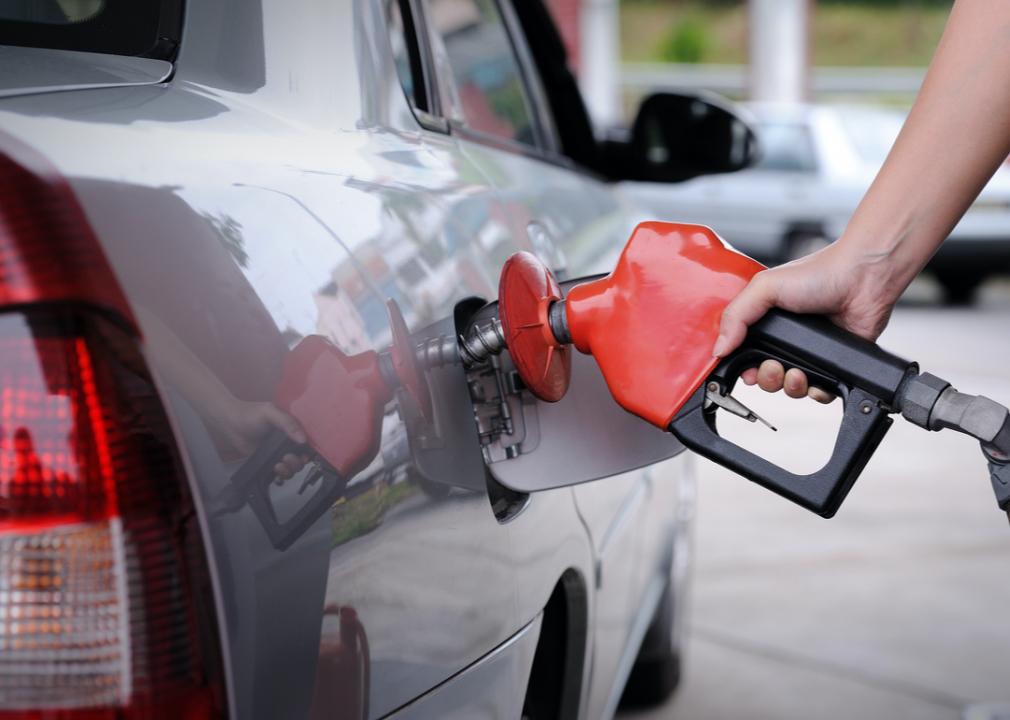
tristan tan // Shutterstock
#9. Keep your gas tank at least half full
Photo shows a close-up of a hand pumping gas into a vehicle at a gas station
If officials call for an evacuation, you’re going to want to leave immediately—not to have to stop for gas along with everyone else. Don’t let your gas gauge dip below half a tank just to be safe.

G-Stock Studio // Shutterstock
#10. Make sure your home insurance is up to date
Photo shows a closeup of three people reviewing an official document on a clipboard
Check your home insurance policy to ensure it’s valid and that you understand what is covered. Most standard policies cover damage caused by flying debris, falling trees, and high winds, but many don’t cover flooding—a significant problem during hurricanes. Consider purchasing flood insurance if you live in a hurricane-prone region.
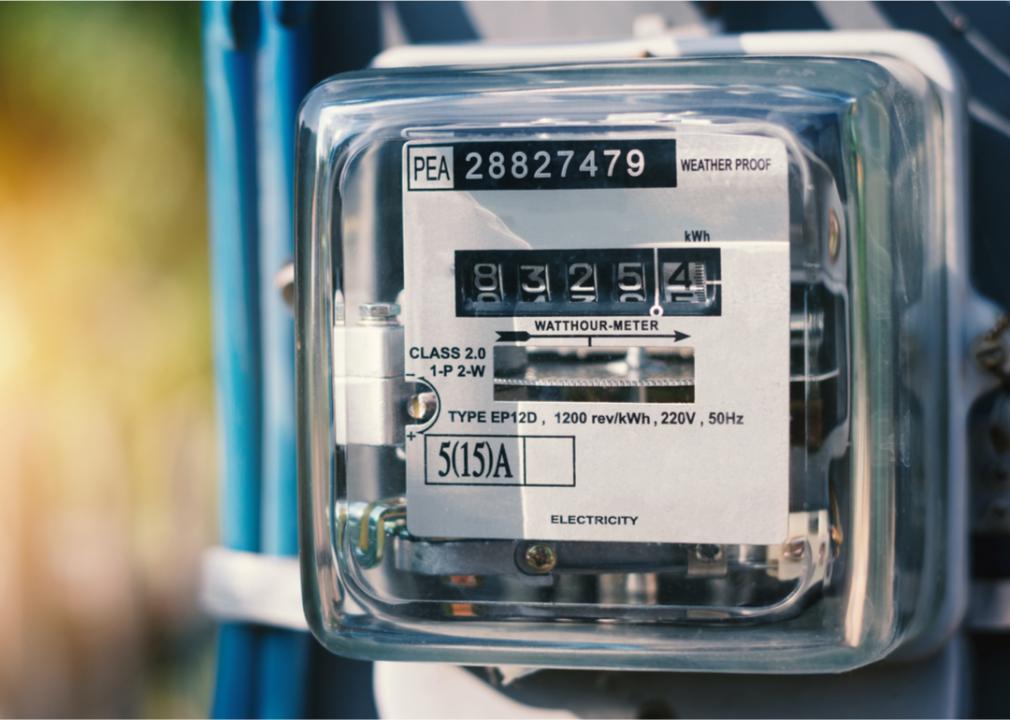
Sunshine Studio // Shutterstock
#11. Learn how to turn off your home’s gas, water, and electricity
Photo shows a close-up shot of an exterior gas meter
Local officials might warn residents to turn off their utilities before a hurricane to prevent gas leaks and dangerous explosions. Make sure you know how to turn off your gas, water, and electric lines.
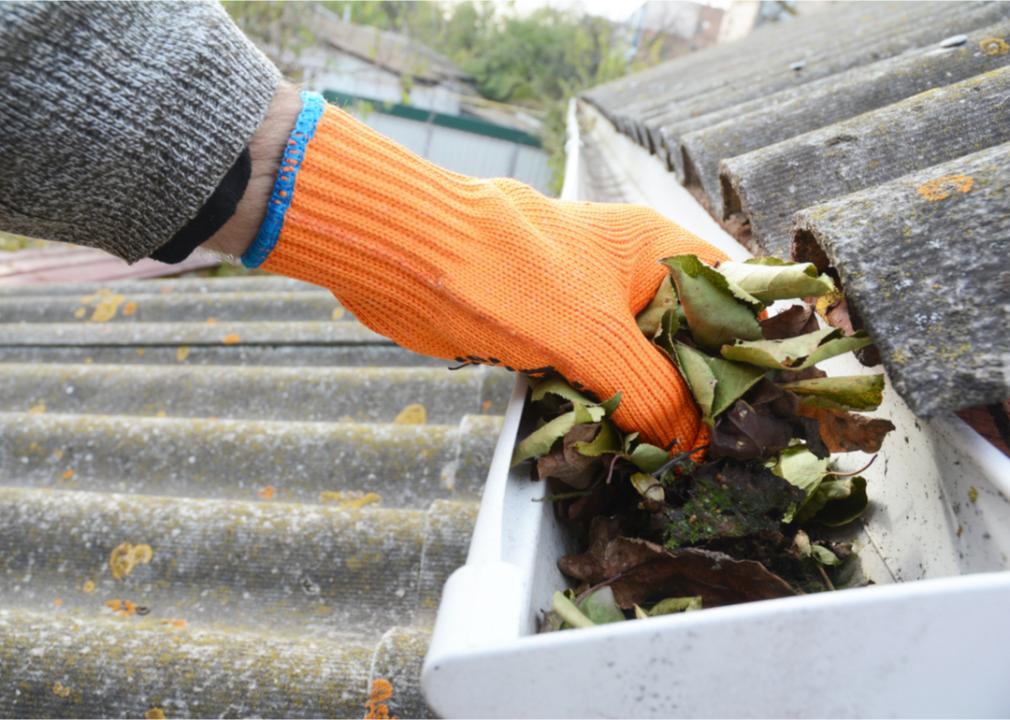
Radovan1 // Shutterstock
#12. Clear out gutters and outdoor drains
Photo shows a close-up of a gloved hand clearing debris from a house storm gutter
If stormwater has nowhere to go, it will back up into your home. Remove debris and clogs from rain gutters and other drains to keep water moving and limit the potential for flooding.
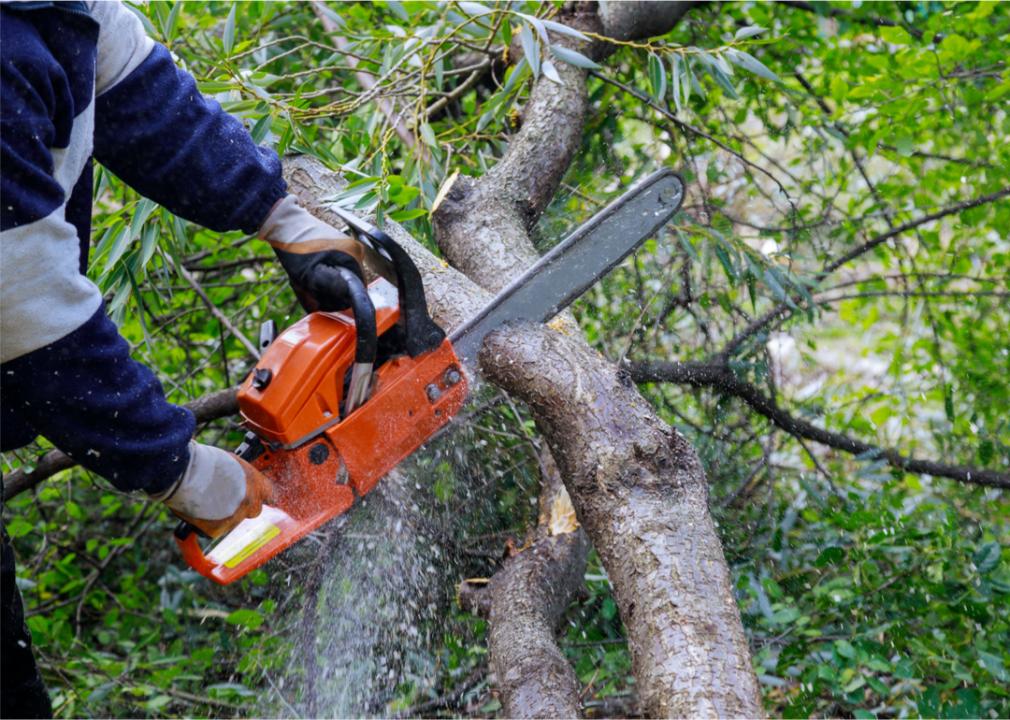
ungvar // Shutterstock
#13. Trim the trees near your home
Photo shows a close-up of a hand holding a chain saw cutting a downed tree
To be considered a hurricane, a storm must have sustained winds of at least 74 miles per hour. Winds that high can easily topple trees, creating the potential for extensive damage to your home. Keep tree branches trimmed and consider removing any trees within 20 feet of your home.
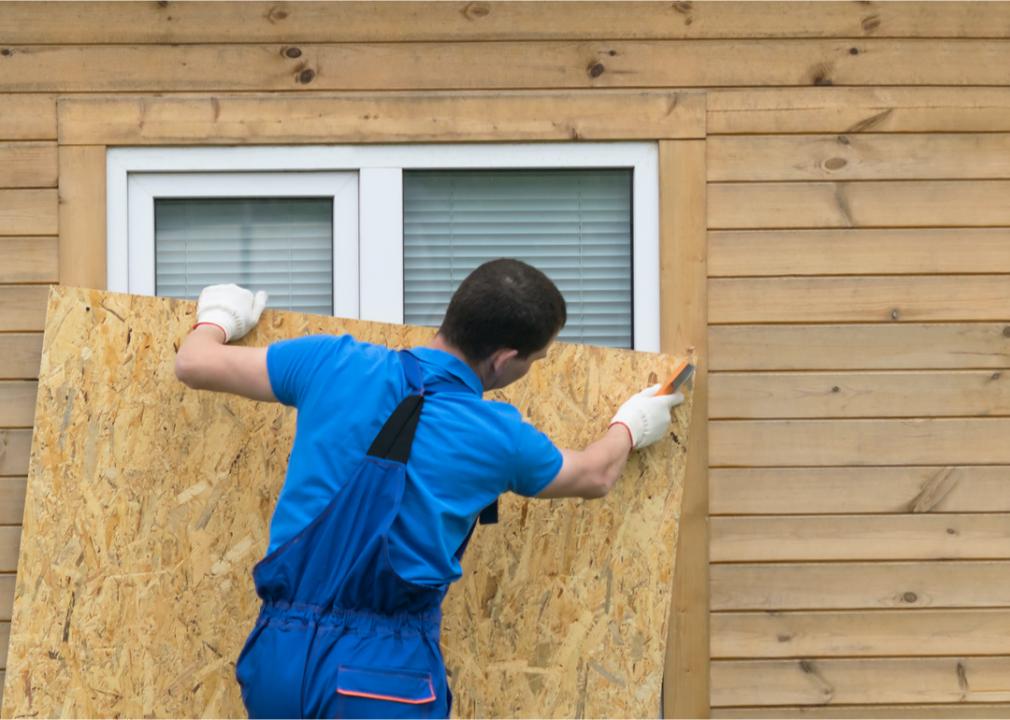
Aleksey Kurguzov // Shutterstock
#14. Secure your doors and windows
Photo shows a man putting plywood over a house window in preparation for a storm
Once hurricane winds reach a property, the likelihood of severe structural damage rises dramatically. Residents of hurricane-prone regions might consider installing permanent aluminum or steel storm shutters. If such a project isn’t in the budget, make temporary covers for your doors and windows out of five-eighths-of-an-inch exterior grade or marine plywood. That way, you can install your temporary shutters quickly and easily when meteorologists predict a hurricane.
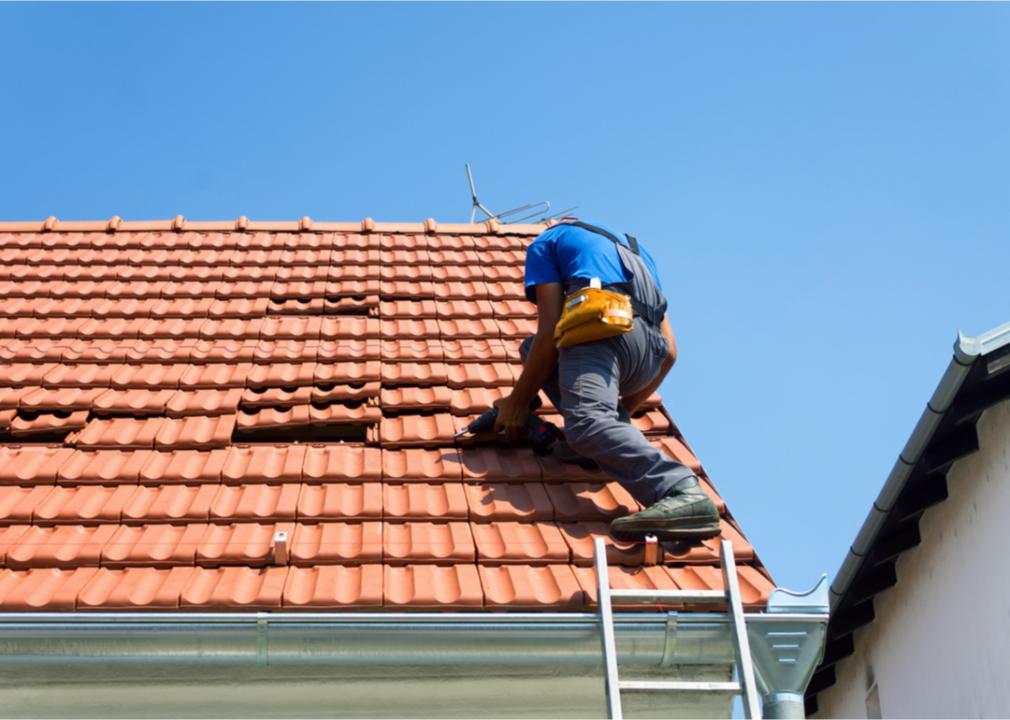
PanicAttack // Shutterstock
#15. Secure and reinforce your roof
Photo shows a man on a ladder make repairs to a roof
When was the last time you had your roof inspected? If you’re unsure, it might be time to call a contractor to ensure that your roof is sturdy enough to withstand hurricane winds.

Andy Dean Photography // Shutterstock
#16. Take photos of every corner of your home
Image shows a hand holding up a smartphone to take a picture of items in a room
If you eventually have to file an insurance claim for hurricane damage, you’ll need a detailed inventory of everything you own. The easiest way to prepare this quickly is through photos. Walk through your house and snap a photo of everything you can think of—that way, you won’t have to rack your brains trying to remember how many books you had on that bookshelf later on.
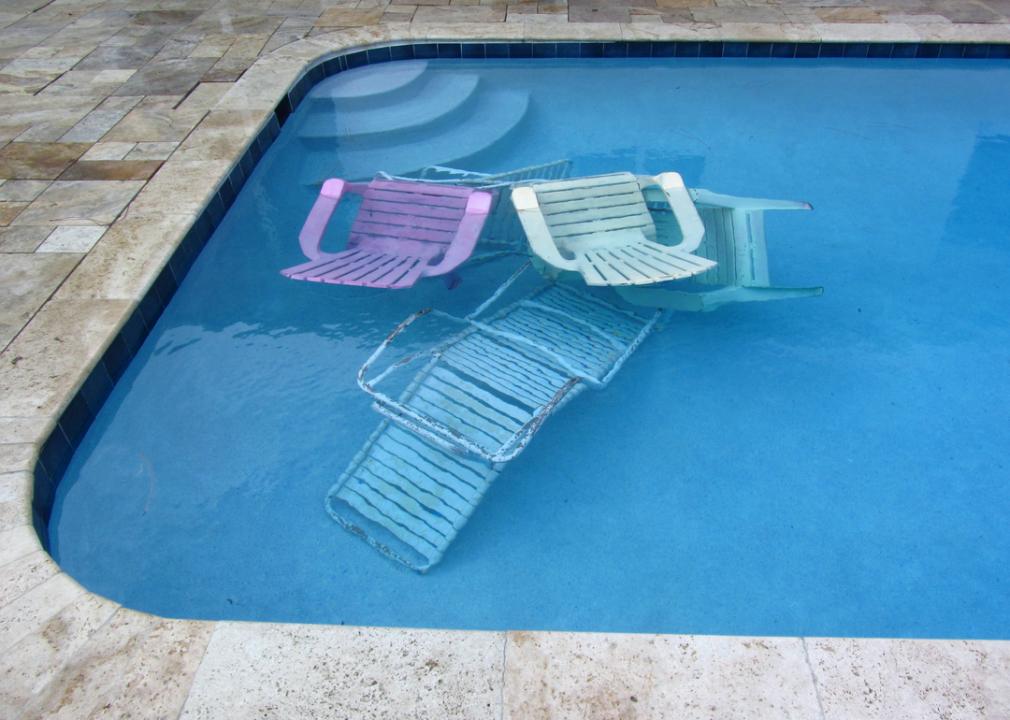
Leydis Thyn // Shutterstock
#17. Bring loose, lightweight objects inside
Photo shows four deck chairs submerged in a swimming pool
Those 74- to 157-mph winds can lift patio furniture, garbage cans, and bicycles as if they weigh nothing. Bring anything you can indoors so it doesn’t become a flying projectile during a hurricane.
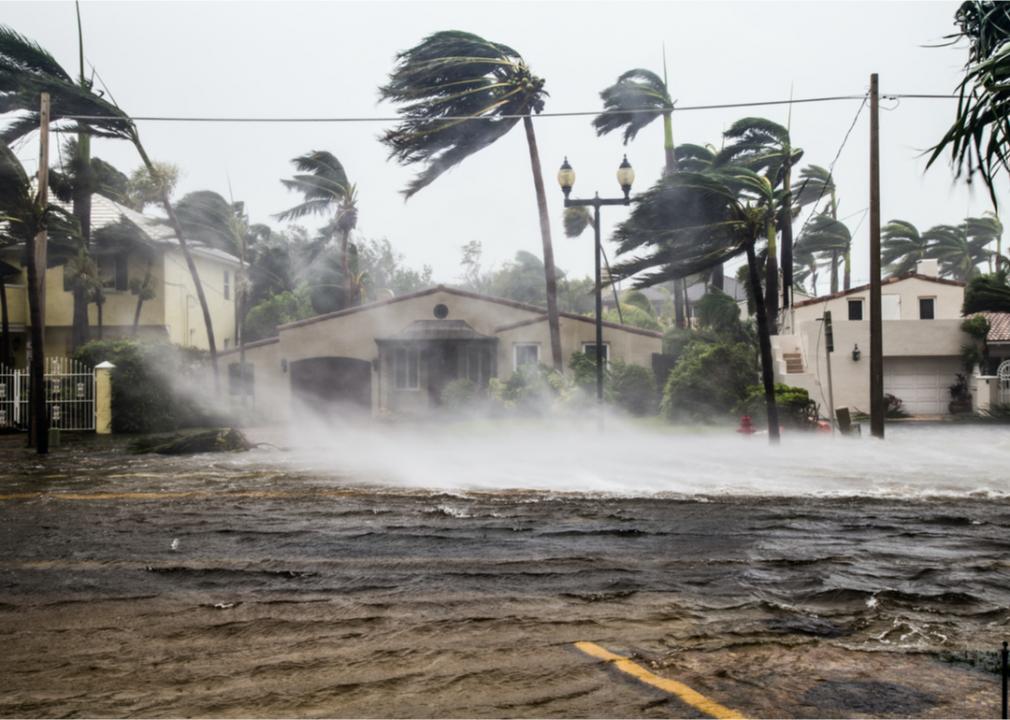
FotoKina // Shutterstock
#18. Secure any other objects you can’t carry inside
Photo shows trees blowing in strong winds with debris and water in the street
What about other objects that are too heavy to lift? Anything you can’t bring inside by yourself should be permanently attached to the ground in your backyard if you have one. Use heavy chains to attach grills, swing sets, and other large objects to the ground.
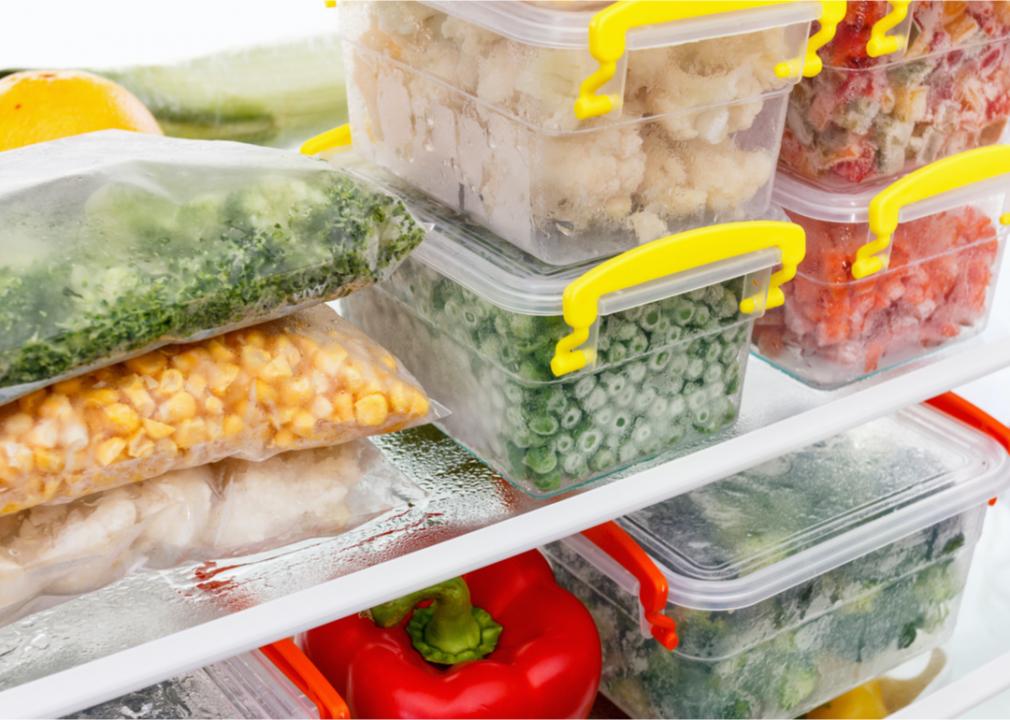
BravissimoS // Shutterstock
#19. Turn your refrigerator and freezer to the coldest setting
Photo shows vegetables and other food items arranged in plastic storage containers inside a fridge
As soon as you hear of an approaching hurricane, set your fridge and freezer to the coldest setting. Chilling your food as much as possible will help it last longer in the event of a power outage.
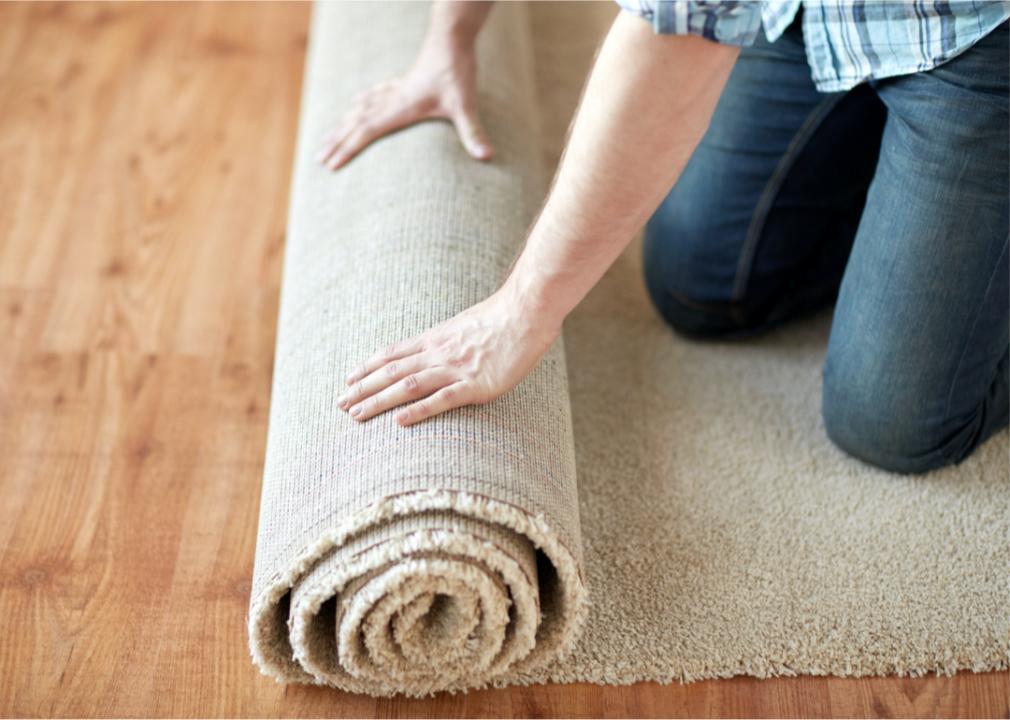
Syda Productions // Shutterstock
#20. Roll up large rugs
Photo shows a close-up of a person rolling up a carpet
If your home floods, large area rugs will soak up stormwater like a sponge. Roll them up and set them upright to keep them dry.
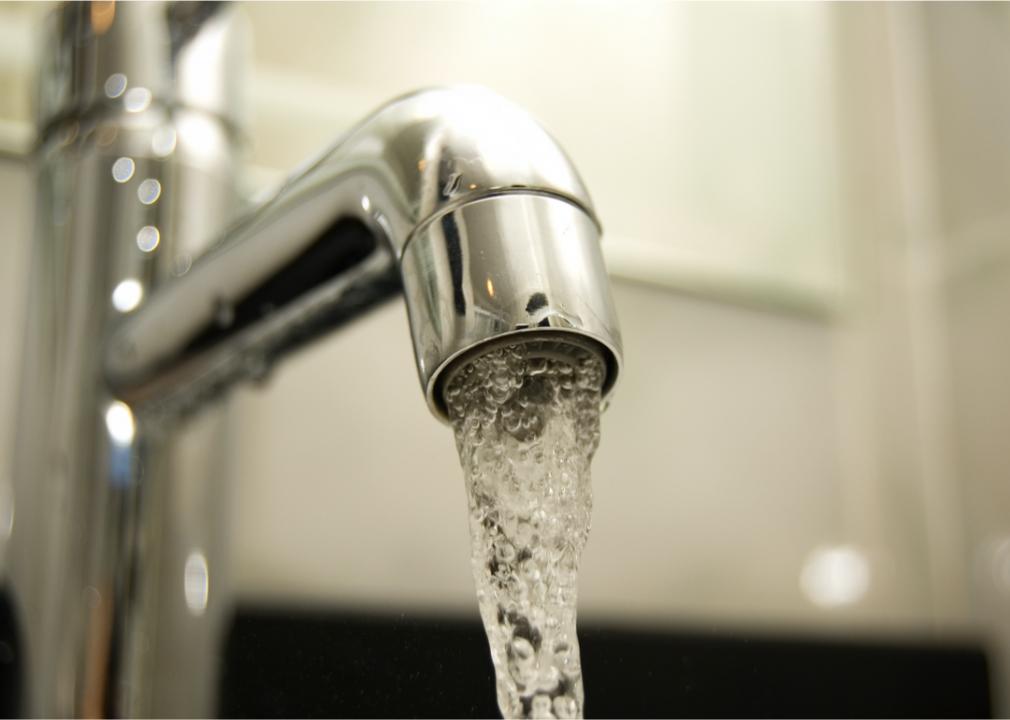
NET_Photog // Shutterstock
#21. Fill up the bathtubs and sinks with water
Photo shows a close-up of a faucet with water coming out
Before you turn off your water supply, fill bathtubs, sinks, and even buckets with clean water that you can use for flushing the toilet, bathing, and cleaning. You might not need this water, but it could prove useful if your water supply is off for several days.
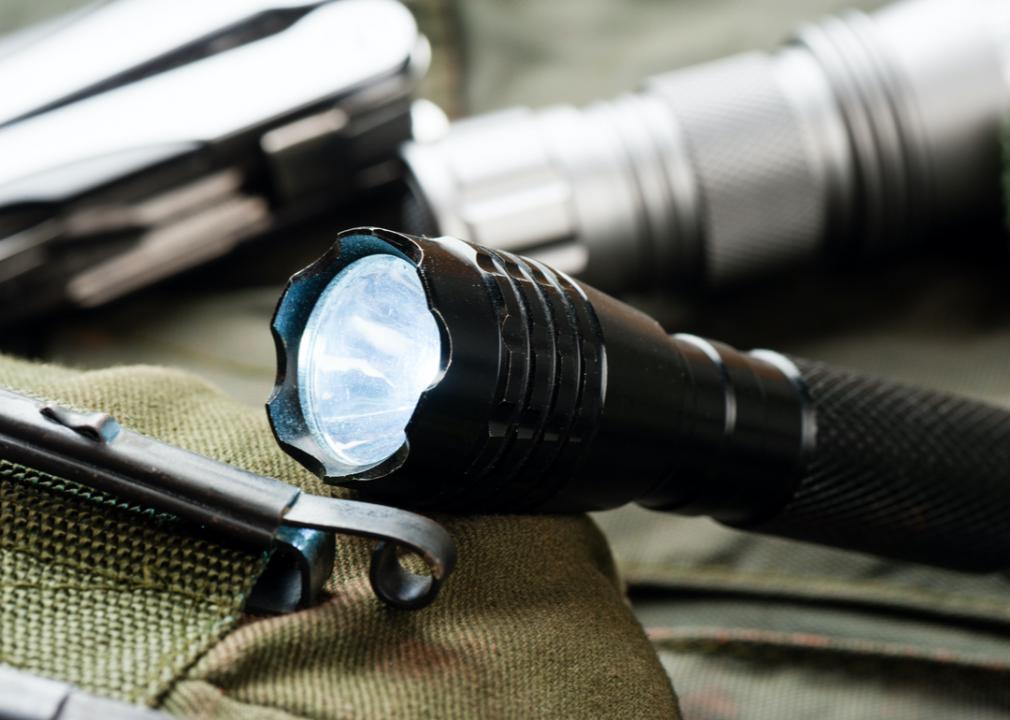
Nor Gal // Shutterstock
#22. Avoid using matches
Photo shows flashlights sitting on a bag on a table
Surging floodwaters can break gas lines or dislodge seals, causing dangerous gas leaks. When you return to your home for the first time, use a flashlight rather than a candle to light your way. That way, if there is a gas leak, you won’t accidentally cause an explosion. If you do smell gas or suspect a leak, turn off the main valve and call your gas company, police department, and fire department immediately.
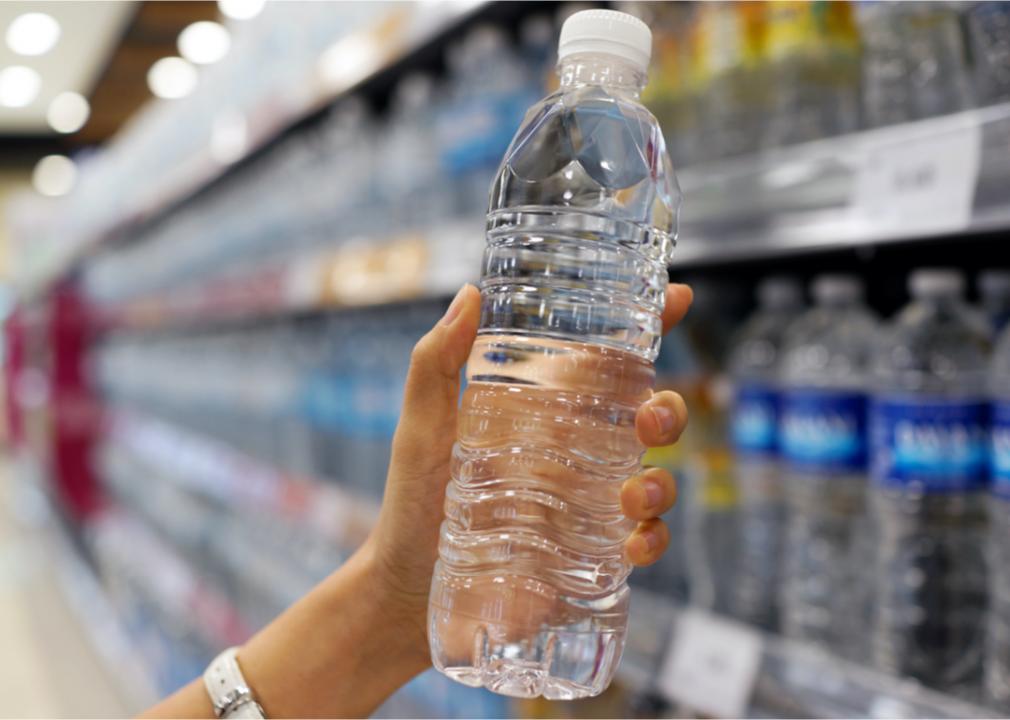
TY Lim // Shutterstock
#23. Don’t cook with or drink tap water after the storm
Photo shows a close-up of a hand taking a bottle of water from a store shelf
Hurricanes and tropical storms can also contaminate the tap water with the same harmful bacteria found in floodwater. Don’t drink or cook with tap water until local authorities give the OK.
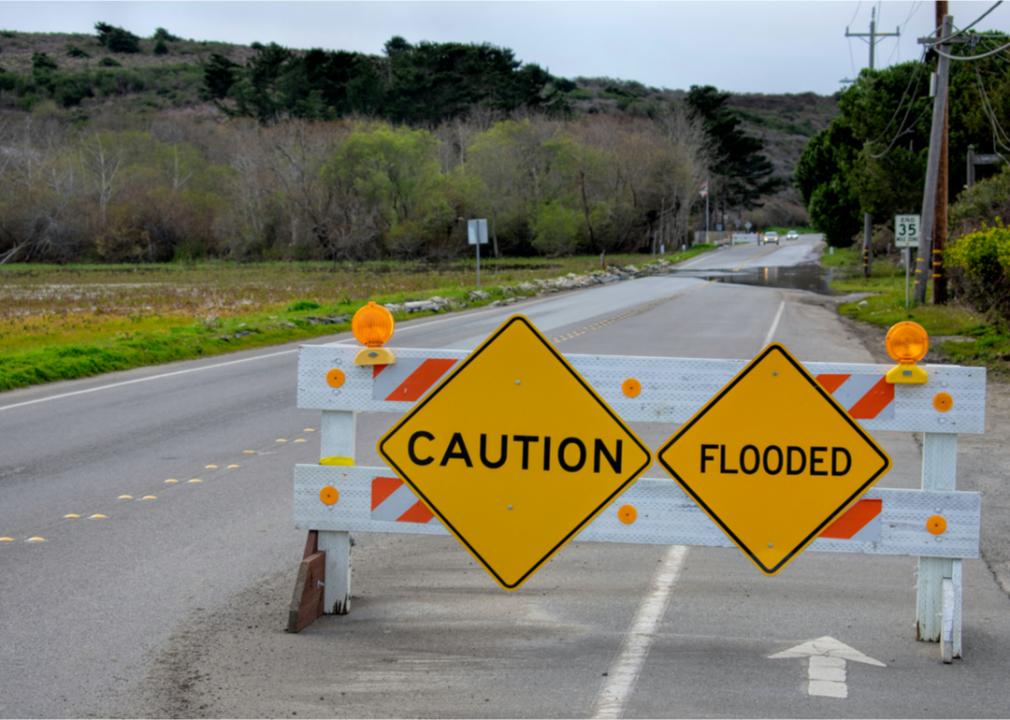
Michael Vi // Shutterstock
#24. When it’s safe, inspect your home
Photo shows a medium shot of a road blocker with signs that read “Caution” and “Flooded”
As soon as you are able to return to your home, check for any damage. Walk through the house room by room, taking photos of any issues you notice. That way, you’ll be prepared to file any necessary insurance claims and begin repairs.
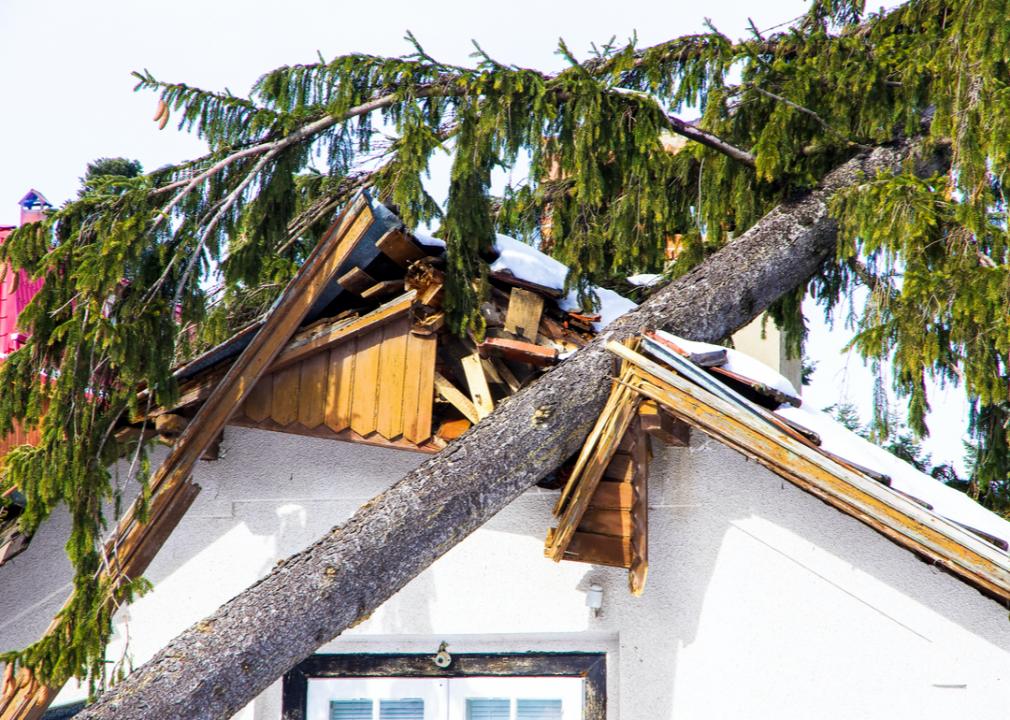
Nenad Novacic // Shutterstock
#25. Report any losses as soon as possible
Photo shows a close-up of a fallen tree on top of a house
If your home has been damaged in the storm, you should notify your insurance company immediately. Provide a general description of the damage, as well as any photographs you took of the losses.
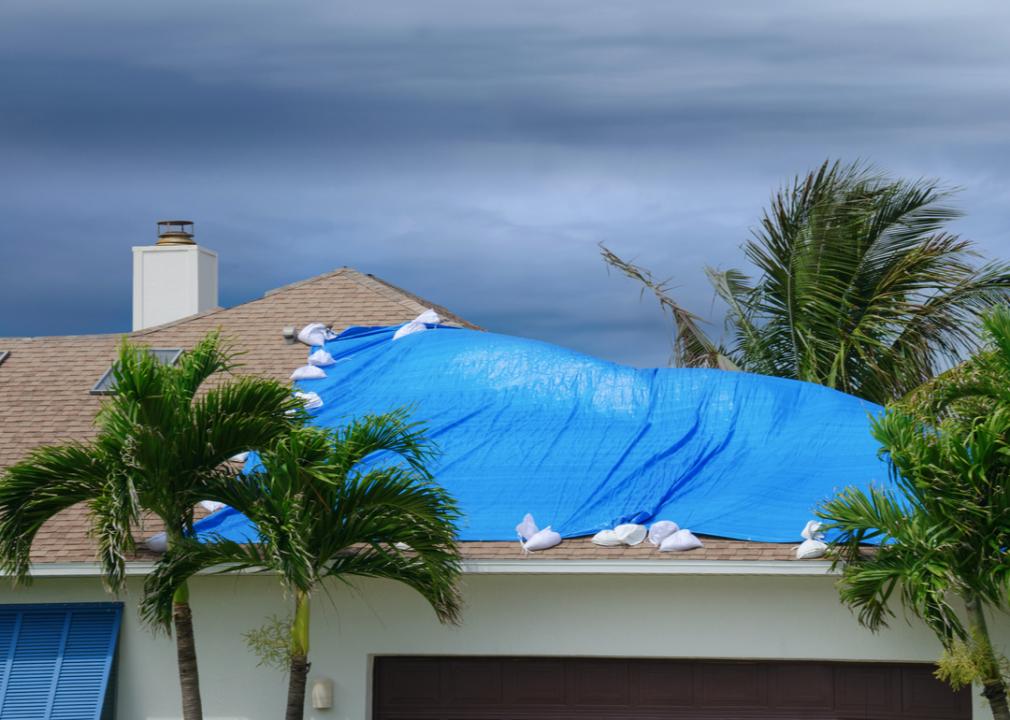
Mike Focus // Shutterstock
#26. Prevent further damage to your property
Photo shows a close-up of a house with a blue tarp attached to the roof
Even if the worst of the storm has passed, lingering weather can still prove problematic. Once it’s safe to return to your property, take steps to prevent further damage. If falling trees punctured your roof, cover any holes with a tarp to keep out rainwater. If your windows have been blown out, tape plastic sheeting over the openings. Since most insurance doesn’t cover damage sustained after the storm, this step could be crucial.
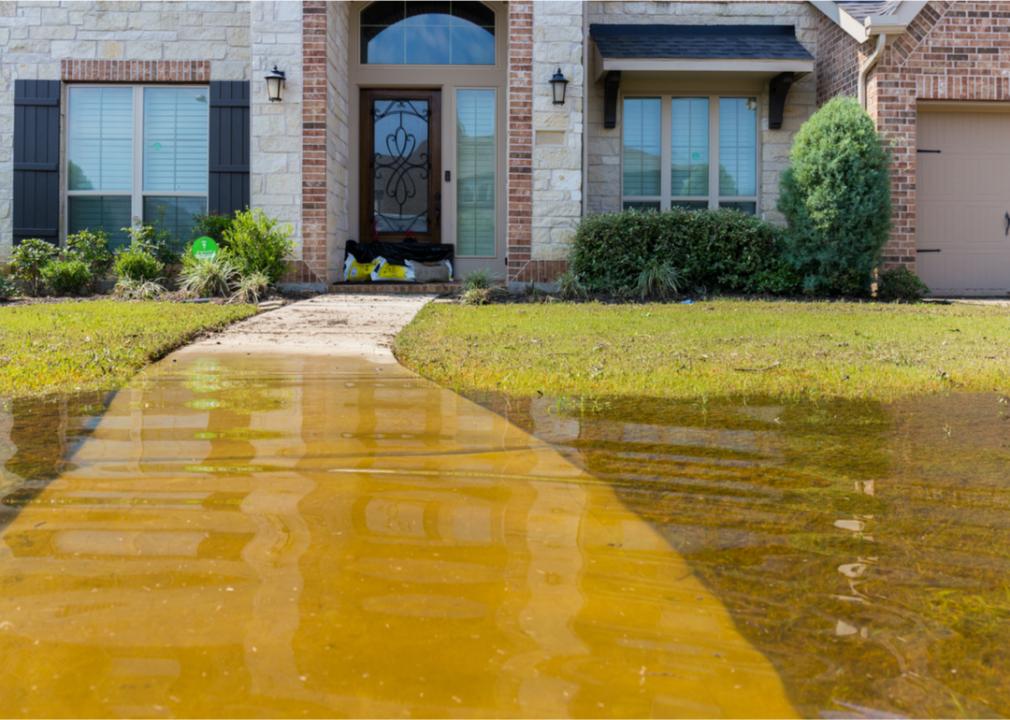
michelmond // Shutterstock
#27. Have your home inspected
Photo shows a medium-shot of a home with flood waters approaching but not breaching the front door
Ensure that your home is safe to inhabit before starting any cleanup or repairs. Contact a licensed contractor to check the building’s structural integrity, an electrician to check your wiring, a plumber to check the water lines, and the gas company to check for any gas line breaks.
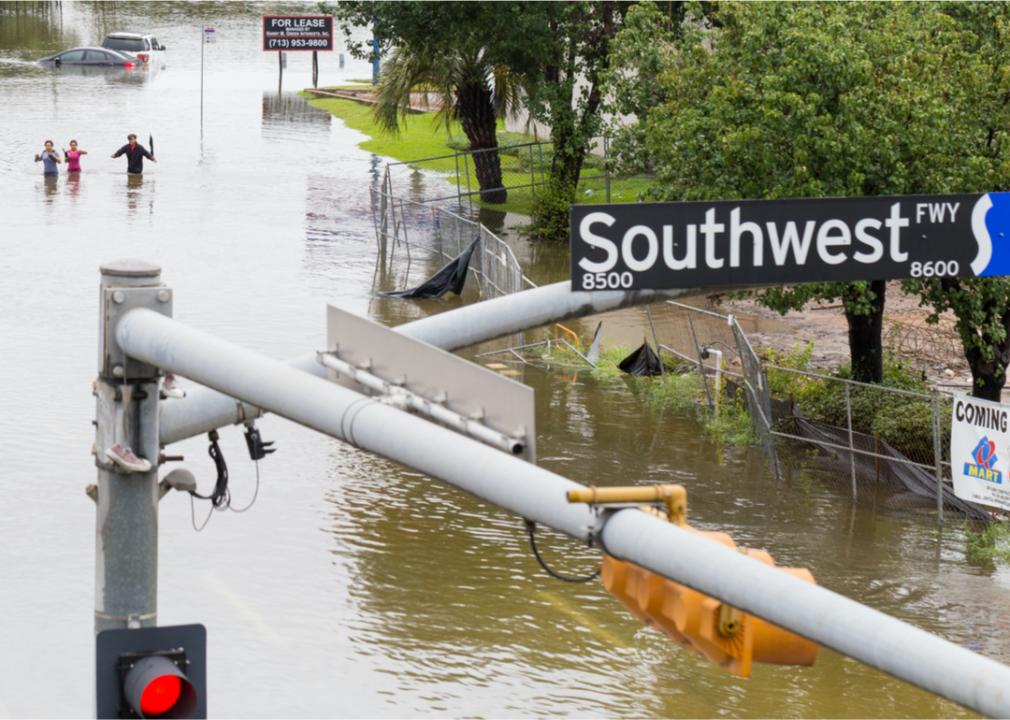
michelmond // Shutterstock
#28. Wear protective gear for cleanup
Photo shows a flooded neighborhood with water halfway up a pole that holds a stoplight and people wading in waist-deep water
Even if your home didn’t sustain much damage, you’ll likely have to clean up a lot of debris on your property. And since that debris might have been contaminated by floodwater, you don’t want to use your bare hands. The CDC recommends wearing safety gear such as heavy work gloves, waterproof boots, goggles, and hard hats during disaster cleanup.
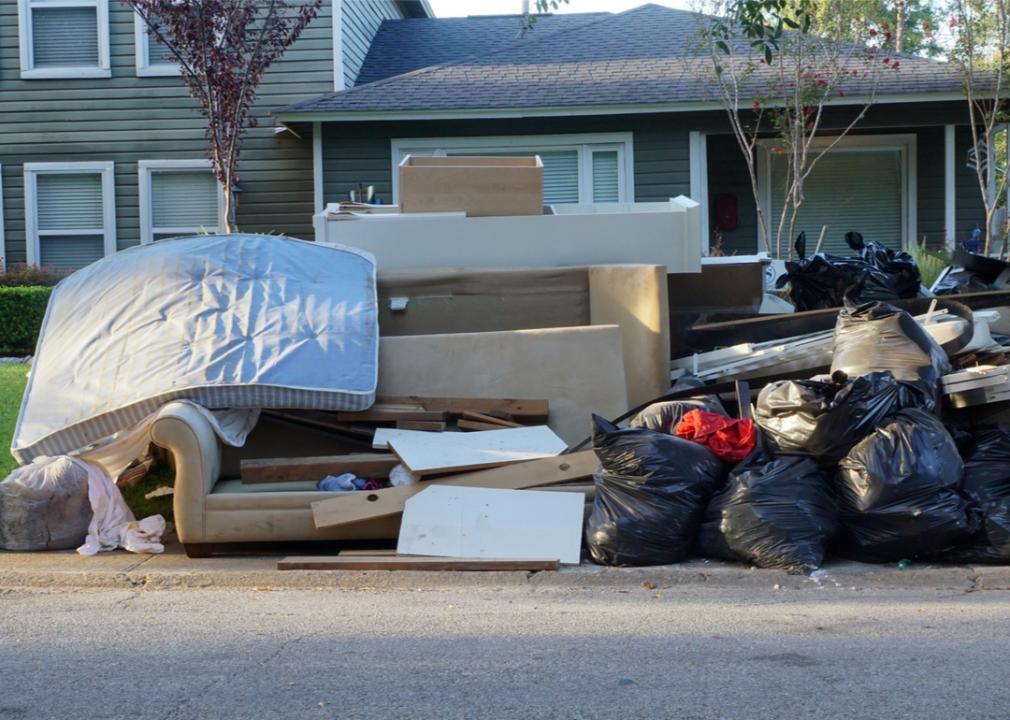
IrinaK // Shutterstock
#29. Throw away anything that’s wet
Photo shows large piles of discarded furniture and trash bags at the curb of a house
Start the process of cleaning up by airing out your home and throwing out any wet items that won’t dry quickly like mattresses, couches, and books. If mold has already started to grow, clean it up with a mixture of bleach and water. Drywall and insulation that have been soaked by floodwater have to go, too.
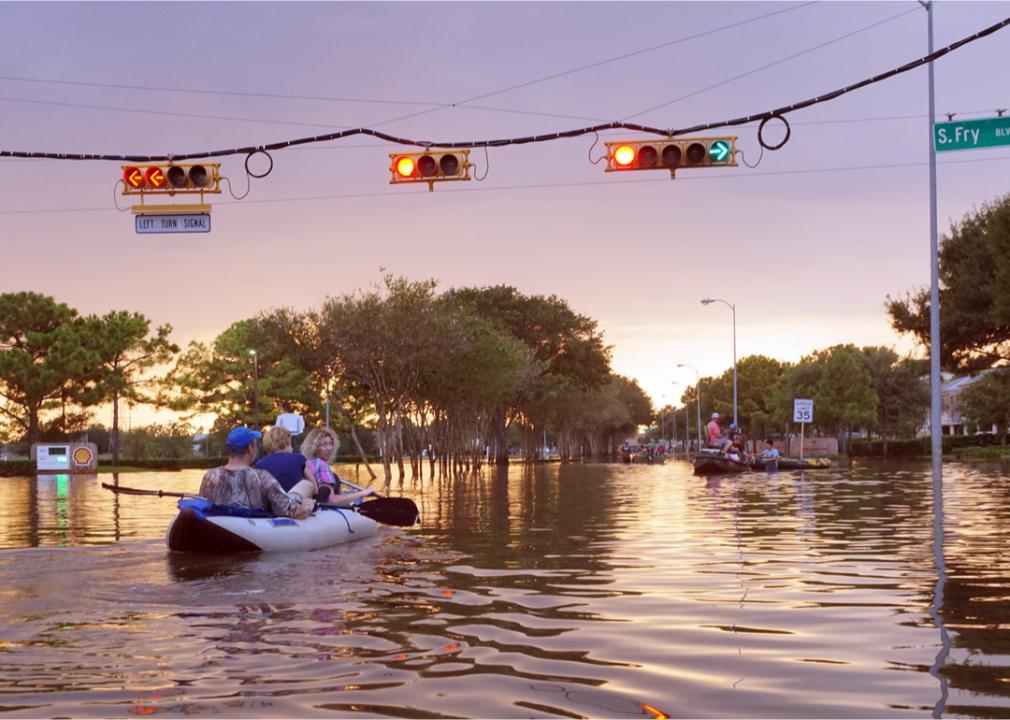
IrinaK // Shutterstock
#30. Take care of yourself
Photo shows several people sitting in a kayak in a flooded neighborhood street
Experts also say you should be careful not to over-exert yourself as you recover from a hurricane. Emotions often run high after a disaster, causing physical tasks to tire you out more quickly than usual.


